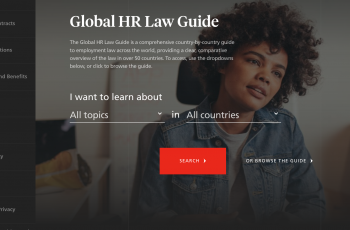
Communication within a corporate organisational setting is no longer conceivable without social media. Nevertheless, many organisations still adhere to traditional forms of communication (meetings, town halls, newsletters or press releases), while those operating in their midst (employees, works councils and trade unions) frequently turn to Instagram, Twitter, TikTok or Telegram to mobilise and campaign. It is no longer possible to plan any corporate or operational measure without grappling with these challenges extensively and examining appropriate actions and responses.
During the COVID pandemic and due to restrictions (limits on gatherings, minimum distances, lockdowns, etc.), works councils and trade unions were among the first organisations to test out new channels for mobilising the workforce and/or their members
Due to both demographic trends and an increasing unwillingness to organise corporately into membership groups, trade unions’ financial resources are dwindling, creating pressure to digitalise. Trade unions have therefore been compelled to break new ground and develop new concepts and ideas, such as ‘virtual strikes’ (see here for further discussion on digital strikes and trade unions’ rights of digital access).
As the yellow vest movement in France has shown, an industrial dispute does not live from the struggle itself, but from the images it creates. If you compare the significance of one photo showing thousands of people in yellow vests with banners marching through burning streets with another photo of just 30 people standing together but at a distance of 1.5 metres apart, the relative impact should be clear to everyone.
Labour conflicts in the virtual world afford employee representatives the advantage in that expressive images and content can be very quickly positioned in the desired light and instantly disseminated, shared, liked and commented on throughout the entire country on a very large scale. This can help employee representatives to create a much wider audience. However, virtual labour conflicts can also distort reality: for instance, the image of a queue of employees outside a food delivery service premises published under the caption ‘Today we are holding the election for our works council, and we’re not even allowed into the building!’, went ‘viral’ on several social media platforms until someone realised that the photo was taken at 07:45 and the office did not open until 08:00.
Knowing the essential basic elements for communicating on social media platforms is critical for developing a tailored strategy.
Networking
The core element of communication on social media is borderless networking. Posts are distributed in minutes across a multitude of ‘networks’ (communities) in a manner that cannot be foreseen or planned in advance, rendering organisational and corporate boundaries a secondary matter. Taking an approach that is limited to traditional corporate communications will not meet expectations.
Openness and bystanders
The discourse on social media is open, meaning any attempt to ‘control’ it through policies or restrictions will fail and shift communication to inaccessible or closed-off forums. The ‘bystander’ (a person who is outside the plant or organisation) can become the driving force and transform the dialogue into a sociopolitical discussion with a single repost. An organisation has practically no influence on any bystander effect. On the contrary, attempts to exert influence only reinforce the bystander effect.
Speed
Posts are easily produced: anyone can write a short, snappy statement, and get it out quickly. An organisation could still be bogged down in a round of voting on a communications proposal, but the entire situation may have long since have moved outside its four walls.
Brevity and emotion
The classic tweet, which lasts all of 5-15 seconds, inevitably compresses discussion, whereas forwarding (sharing) or commenting usually leads to escalating emotion.
Negativity
The most intriguing phenomenon, however, is that negative comments gain the upper hand within minutes, while a large silent mass of people drop out just as quickly due to disinterest or frustration.
Based on the discussion above, here are ten tips for promoting active network communication in business organisation and collective bargaining disputes.
1. Blend formats
The starting point is the simple recognition that ‘real’ and virtual worlds are inseparable, cannot be divided into ‘old and new’ (or even ‘young’), and cannot be managed solely on one side or the other. Communication formats are intermingled right from the outset and blend together within seconds.
2. Create community and network
HR communication, as a component of stakeholder management, must therefore necessarily include social media press contacts and public interest groups. These have the potential to seize upon corporate issues and – in line with the above – draw them into the political arena.
3. Forget ‘explanation sovereignty’
Many organisations still strive to assert a kind of ‘explanation sovereignty’ over their employees in terms of communication. This antiquated approach can quickly go sideways and transform a message that by itself is not very exciting into mounting uproar on the Internet. It is therefore advisable to avoid sharing any kind of instructions or reprimands online, and even to refrain from just conveying a sense of all-knowing authority.
4. Check your stance
The entire discussion around the ‘S’ in ESG currently shows that organisations need to consider the social consequences of their plans in a special manner when considering possible decisions. A deliberate and conscious position or stance on a personnel decision can be justified if the organisation has made that decision after weighing all the social (‘S’) consequences and communicated its stance in a suitably measured manner.
5. Be selective
In this context, the choice of media to communicate this position or stance must be decided carefully. The approach should not involve ‘all guns blazing’ but rather a single targeted ‘shot’ released on a platform that is predominantly used by the actual target group.
6. Listen to the silent majority
The silent crowd wants a solution, not a dispute. And they want to be reliably informed and understood. Plus, nobody wants to see their own employer in panic mode. After all, it is always also about job security, selecting the right employer, and having a good employer.
7. Be a reliable reference point
In the long term, only those who can provide their targeted community with reliable, preferably sustainable, reference points (for accurate information) will ‘prevail’ on the internet. Only facts, facts, facts can help against half-truths and opinions, and they must be verifiable; in other words, resilient.
This reference point should be linked to individuals who confront online agitation with a degree of ‘personal continuity’ (personelle Kontinuität). This does not necessarily have to be the CEO. For example, it may well be that the management team of an impacted business unit, or even foremen or shift supervisors, can be appropriate reference points. In extreme cases, even outsiders (experts, academics, etc.) can be appropriate. Even a chairman of an employee-employer mediation board can serve as a reference point in difficult and charged situations.
8. Tell a positive story
Always counter a negative narrative told by a minority with your own positive tale. Phrases such as ‘we are talking…’, ‘we are negotiating…’ and ‘we are working together on a solution…’ are the mantras of successful network communication.
9. Maintain dialogue
Phrases such as ‘breaking off talks’ etc. are a thing of the past. Even in response to the most hyperbolic comments, your organisation’s reference point communicator can react selectively and positively, but also quickly on a verifiably factual basis via the Internet. It’s important never to react spontaneously and uncontrollably but rather purposefully and prudently. The reference point communicator can show strength precisely through selective, measured input in those situations.
10. Reach across channels and community borders
This strategy also entails purposefully directing the discourse via the reference point communicator from one medium (one known for its agitated or antagonistic discourse for example) into your own domain, and into communication forums that can be accessed by your own (silent) community and that are perceived as trustworthy and fact-based.
Both reactive statements and absorbing a barrage of criticism are ‘old school’ responses in the social media age; they can quickly turn negative in human resource pressure situations. Long-term, active communication on social media is becoming a decisive factor in HR work. In the future, HR managers will be judged by the extent to which they (together with communications professionals and the company’s top management) build resilient and durable networks that establish objective reference points for resilient communication in the event of a crisis. This course of action will not only reassure the bulk of the workforce but even more, the pool of potential employees. Crisis communication should be replaced by proactive HR work on social media networks.
For more information about worker representation



